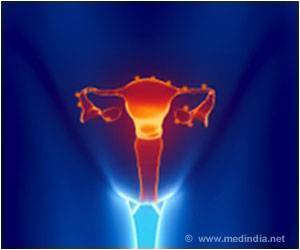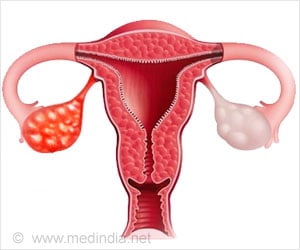Study determines how one type of immune cells helps cancer cells attach in the peritoneal cavity, enabling metastasis.

‘Identifying mechanism of ovarian cancer metastasis could lead to new therapies to curb metastasis of these tumors.’





Despite these challenges, most patients with ovarian cancer are diagnosed after metastasis has begun, resulting in poor patient outcomes. While ovarian cancer is only the 11th-most common form of cancer among women in the United States, it accounts for the fifth-most deaths, according to the Ovarian Cancer Research Fund Alliance. "Like most cancers, it’s not the primary tumor that’s usually the problem. It’s the spread of the tumor to nearby organs that leads to serious complications," Kreeger says. "So if you can slow that process down, it’s possible the patient will live longer and/or have a better quality of life."
In studying high-grade serous ovarian cancer -- the most common but also most aggressive type -- Kreeger, postdoctoral fellow Molly Carroll and other lab members have teased out how one type of immune cells helps cancer cells attach in the peritoneal cavity, enabling metastasis. Higher levels of these immune cells, called alternatively activated macrophages, are associated with worse outcomes. But the question remained: Do these macrophages encourage metastasis?
To find out, Kreeger’s team created a micro-culture device that allowed them to bring together the key players: macrophages, cancer cells and mesothelial cells, which line the peritoneal cavity. Experiments revealed macrophages increase tumor cell attachment to the mesothelial cells by making the mesothelial cells stickier.
"For me that was one of those scientific ’ah ha’ moments -- the interactions between the normal cells in our body can influence metastasis. In other words, it’s not all about the tumor cell," says Kreeger.
Advertisement
A preliminary experiment in mice validated those results, while human samples--obtained through collaborators in the UW-Madison School of Medicine and Public Health--showed that patients with ovarian cancer had higher levels of MIP-1β and P-selectin.
Advertisement
"We’re interested in pursuing multiple avenues, because it’s possible one will work better than another," says Kreeger, whose group has filed a provisional patent on the findings with the Wisconsin Alumni Research Foundation. "It’s also possible one will have more tolerable side effects than another."
Kreeger will use a recently awarded grant from the Rivkin Center for Ovarian Cancer to further validate the findings in long-term experiments in mice in order to set the stage for pre-clinical testing of drug treatments.
Carroll, the first author on the paper, says being able to target another aspect of the cancer’s spread beyond combatting tumor growth with chemotherapy opens new avenues for treatment.
"Treatment for ovarian cancer really has not changed in the past 20 years," she says. "Hopefully through the development of such maintenance therapies, we can prevent the establishment of new tumor metastases."
Source-Eurekalert












